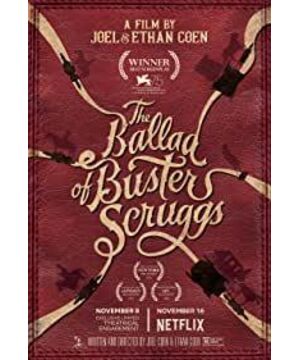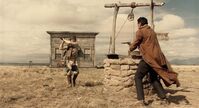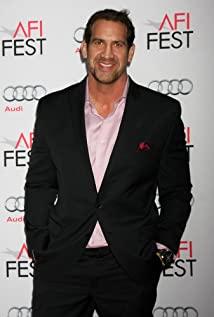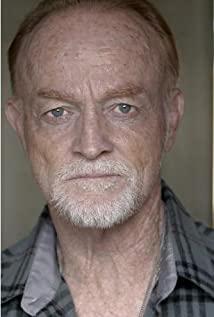Six western stories, full of metaphors and foreshadowing. The first two have no sense, let's start with the third.
Third story:
This story has a very cruel ending, but there are actually foreshadowings ahead.
There are few lines in the entire film other than the lines performed by the boy's monologue, the tune hummed by the man alone, and the dialogue between the man and the prostitute. Boys and men have never communicated verbally, which makes people wonder what kind of relationship they have, and they are definitely not friends anyway.
The lines of the boy's monologue are a series of narrations, which quote a passage from the Old Testament where Cain quietly killed Abel in the wild. It is hard to say that it is not a metaphor for the ending of the story.
The boy's monologue is a mix of Shelley's poetry, Shakespeare's sonnets, biblical Old Testament stories, and Lincoln's Gettysburg Address. How could even the ragged audience in the town understand such a content of such a bright spring and white snow? Still applauding for money?
In fact, it's just because the entertainment life is too scarce, there are no performances to watch, and no one cares about the literature, belief, morality, and politics in his monologue. Just like the film projectionist during the Cultural Revolution in Zhang Yimou's "One Second" recently released: "As long as you put something, no matter what, they can sit here and watch it all night."
The director expressed a very obvious metaphor in this story: intellectuals VS entertainment to death. When the mediocrity has nothing to do and no drama to listen to, it may even give the intellectuals a reluctance to support them, throwing a few steel shovels. But once more interesting vulgar content appears, even a chicken that can do arithmetic can make intellectuals die.
The choice of men is cruel, but they are all poor people who are struggling to starve to death. What really killed the boy was the votes cast by the audience with their feet and shovels.
Since it is a metaphor, more interpretations can be made. For example, literature, religion and politics are vulnerable in the face of the pragmatism of science and engineering disciplines. Another example is the vulgarity of today's short video platforms. A sheep and a dog can get millions of likes, and they can be realized countless times. They really have connotations and ideas. The content is unknown.
Fourth story:
The reversal of this story is really unexpected, but it also makes sense, because there are foreshadowings.
The people who were shot and died in this movie were all headshots, and it would be strange to see the old man being attacked, eh? Why is the place where the old man was shot not in the forehead, but a little lower on the right chest? Can this part be killed with a single shot and not move at all?
In the future, I have to remember that in the films of the Coen brothers, those who do not hit the forehead between the eyebrows are not dead.
In addition, if the old man had a near-miss experience after the replay, he would definitely think of bringing a dog next time, yes, just bring the President Pierce in the fifth story who is only called when there is trouble.
Fifth story:
The whole story gives people a feeling of impermanence in life. As the team leader said: "Uncertainty is the only right and important thing in this world."
The life and death of the older brother, the marriage of the woman, the money left by the older brother, the life and death of the puppy, the life and death of the old cowboy, the life and death of the Indian, the life and death of the woman, and even the protagonist of this story, are like flipping a coin again and again, all of them are one and the same. Group random boolean, jumping randomly between 0 and 1.
When the director wrote the script, he probably imagined himself to be the killer in No Country for Old Men, flipping a coin again and again, randomly deciding the life and death of the character, and the plot was made up after the fact.
Not to mention, it is also full of craftsmanship. The foreshadowing of the Indians was buried together when the woman’s brother was buried in the front. If the Indians are mentioned here, they will definitely appear later.
The puppy President Pierce loves to bark, and it must be a hook buried for the later plot. The puppy is not dead, it will definitely come back later.
The groundhog's hole gave the old cowboy a terrain opportunity for infantry to fight cavalry, to outwit the weak.
The least likely to be the protagonist becomes the protagonist, and the least likely to survive the puppy survives.
Sixth story:
This is the most literary of the six stories, very classical.
The lighting of the whole story has always hinted at the truth.
The sunset at the beginning of the story was a little abrupt. As the plot progresses, the light gets darker and darker, eventually falling into darkness.
The three passengers represent the animality, divinity and rationality of human beings respectively.
The hunter lived like an animal, with a squat barbarian woman, and increasingly felt that there was no essential difference between humans and ferrets;
The old woman is decent, moral, and religious. She can't accept the hunter's claim that humans are like ferrets, and the French can't accept the French's claim that only she can be trusted. The questioning of her husband by the French also implies that neither her husband nor she, a moral defender, is what it seems;
The French don't believe that people can understand each other thoroughly, they don't believe in God, they don't believe in friendship, they only believe in themselves.
But it doesn't matter what your value orientation is, in the face of death, it's all the same. Times are changing, values are changing, only death is eternal.
View more about The Ballad of Buster Scruggs reviews











